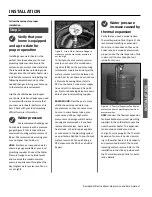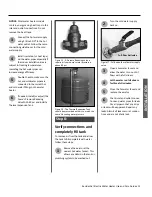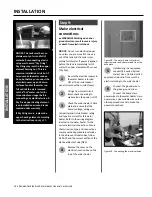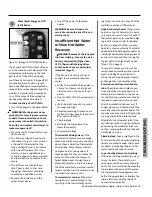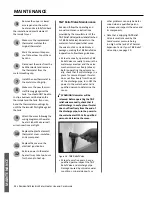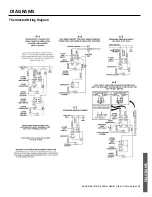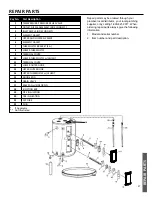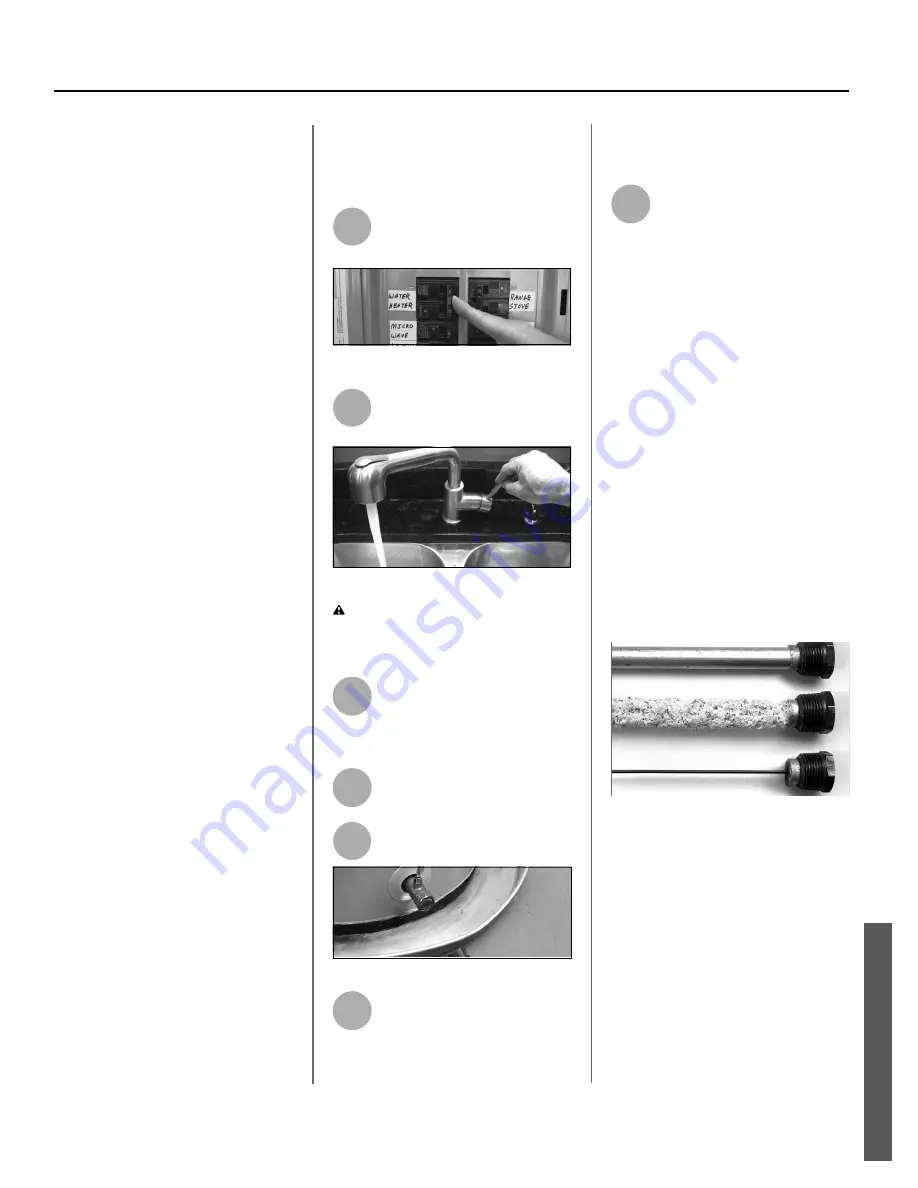
Residen al Electric Water Heater Use and Care Guide • 21
MAINTENANCE
MAINTENANCE
Rou ne Maintenance
Rou ne maintenance will help your
water heater last longer and work bet-
ter. If you can’t perform these rou ne
maintenance tasks yourself, contact a
quali
fi
ed person.
Water Heater Maintenance
A er the
fi
rst six months, drain and
fl
ush the water heater and inspect the
anode rod. Depending on the hard-
ness of your water, repeat this process
at least annually, or more frequently if
needed. From me to me, you may
need to replace a hea ng element or a
thermostat. All three maintenance tasks
are described below.
Draining and Flushing the
Water Heater
Tap water contains minerals that can
form lime deposits on hea ng elements
or sediment in the bo om of the tank.
The amount of lime deposits or sedi-
ment depends on the hardness of your
tap water. The rate at which sediment
builds up depends on water quality and
hardness in your area, the tempera-
ture se ngs, and other variables. We
recommend draining and
fl
ushing the
water heater a er the
fi
rst six months
of opera on to determine the amount
of sediment build up. Draining sedi-
ment extends the life of the tank, heat-
ing elements, and drain valves.
• In areas with very hard water,
remove and check the heating ele-
ments whenever you drain the tank.
If you have heavy lime deposits on
heating elements, you will need to
replace them more often.
• Sediment may form large masses that
can prevent the tank from draining.
Have a qualified person use a de-lim-
ing agent suitable for potable water to
remove the sediment buildup.
• In most cases, it is easier and cheap-
er to replace lime-encrusted ele-
ments than trying to remove heavy
lime deposits.
To drain and
fl
ush the tank:
1
Locate the water heater’s
circuit breaker and turn it OFF
(or remove the circuit’s fuses).
Figure 24 -
Circuit Breaker
2
Open a hot water faucet and
let the hot water run un l it is
cool.
Figure 25 -
Water Faucet
WARNING! Be sure the water runs
cool before draining the tank to reduce
the risk of scalding.
3
Connect a garden hose to the
drain valve and place the other
end of the hose in a drain,
outside, or in buckets.
4
Turn the cold water supply
valve OFF.
5
Open the drain valve on the
water heater.
Figure 26 -
Drain Valve
6
Open a hot water faucet to
help the water in the tank
drain faster.
NOTICE:
DO NOT turn electrical power
back on unless the tank is completely
full of water.
7
Remove and inspect the anode
rod (see Repair Parts Illustra-
on on back cover for loca on
of the anode rod). Replace the anode
rod if it is depleted. Turn power o
ff
. Run
hot water un l it’s cool. Turn cold water
supply valve o
ff
. Open a hot water
faucet to depressurize tank. Locate and
remove the black plas c cover marked
“Anode” Use a “key hole” saw or similar
tool to remove the foam insula on
covering the anode rod. Once the
anode rod is exposed, use a 1 1/16”
socket wrench with an extension to
remove it. Inspect the anode rod and
replace if depleted. Apply Te
fl
on® tape
or pipe joint compound and reinstall
the anode rod ghtly. It is not necessary
to replace the foam removed to access
the anode. Turn cold water supply valve
on. When hot water runs full, close hot
water faucet. Check for leaks and repair
if necessary. Turn power on.
Figure 27 -
Anode Rods from new (top) to
partially depleted (middle) to fully depleted
stage (bottom)
Anode Rod.
The anode rod is a sacri
fi
cial
metal rod that helps reduce corrosion
and premature failure (leaks) in the tank.
The anode rod is a consumable item.
Inspect the anode rod a er the
fi
rst six
months of opera on when you drain and
fl
ush the tank. Replace the anode rod if
it is substan ally worn out or depleted.
Therea er, inspect the anode rod annu-
ally or more frequently if needed. If you
use a water so ener, your anode rod will
deplete faster than normal. Inspect the

